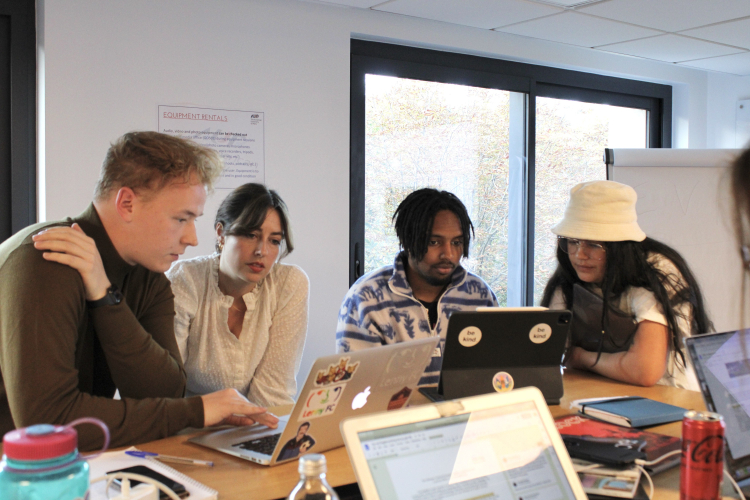AUP Does Not See Color

Scattered throughout the AUP website are images highlighting the so-called diversity of the university’s student body. Yet when walking the halls, one can’t help but notice the overwhelming amount of white upper-class students decked out in designer apparel.
AUP graduate student Laurel Wong says that “AUP claims diversity on the basis of having different nationalities represented in their student body but nothing else, which is not enough to claim being diverse. If AUP wants to be truly diverse, then it should reflect on the students’ race, ethnicity, and gender.”
The truth is that AUP does focus its definition of diversity based on nationalities and languages and fails to record any information on ethnicity and race. The Office of Admissions said this is the case because of French law, which makes it illegal to collect any sort of information regarding a person’s race, ethnicity, or religion. But the failure to record this sort of information has resulted in a predominantly white and American student population.
A French law from 1978 bans the collection of racial data and the origins of this law can be traced back to the Holocaust. This law turned France into a color-blind society and appears to have the same result within the AUP community. In France, public policy depends on geographical and socioeconomic data to fight against systemic racism without having to depend on race and ethnicity. Unlike the French government, AUP’s Office of Admissions only collects financial information from students who apply for financial aid. Yet AUP’s focus on nationality as an indicator of diversity follows the country’s color-blind policies.
This fall semester, 628 new students (graduate and undergraduate) were welcomed into the university and an overwhelming 77% of them came from the United States. AUP’s Office of Admissions reported that the incoming class's top ten nationalities were the United States, France, United Kingdom, Brazil, Italy, Spain, Mexico, Lebanon, India, Canada, and Switzerland. 89% of new students come from countries with some of the world's highest GDPs, while an underwhelming 25 students from this semester’s incoming class come from other countries around the world.
A recent survey of the current student body, including new and returning students, conducted for the purpose of this article revealed that 42% of students don’t believe AUP to have a diverse student body. Although that is not the majority, most students who believe AUP to have a diverse student body identified as white on the survey. It is hard to identify a diversity problem when you are part of the racial majority.
“I think that being a part of the racial majority at AUP impacts my perception and it shows in the way that I don’t think about it or notice it. In my previous schooling and in my home life I’m used to seeing a lot of white people so it doesn’t stand out to me when I’m surrounded by them.” said graduate student Blake Fairbanks.
With desks lined with Mac laptops and classroom floors filled with Goyard tote bags, AUP lacks socioeconomic diversity as well. Over 65% of students who shared their household income reported that their annual income is over €80,000 while 47% of those students have an annual income of over €110,000. A recent piece by Peacock Plume’s Jacob Shrophire discusses the lack of socioeconomic diversity at AUP in more detail.
The AUP Diversity Council was asked to comment for this piece but said that their “mission on campus focuses largely on mediation between individuals and receiving reports of bias or discrimination.” Based on their statement, the Diversity Council is not tasked with the job of diversifying or promoting diversity among the student body.
“Diversity makes people feel like they belong. It’s specifically important within an academic setting because (in terms of race) there is a deeper understanding and community that comes with being together within a space of higher education that is already exclusive and othering.,” said graduate student Sydney Scott.
Diversity matters but diversity in an international multicultural academic institution matters even more. Diversity fosters empathy, inspires creativity and enriches educational experiences. It allows students to feel a sense of belonging, a sense of comfortability; it provides a safe space.
As an institution whose mission statement reads “an AUP education supports professional skills development and cultural fluency… that emerge from the natural diversity of AUP’s student and faculty bodies,” AUP needs to find better ways to diversify the student body.
Diversity needs to be shown through every aspect of the student body. Welcoming one or two students from countries in the global south is simply not enough to call your student body diverse.
Next time you walk through the halls, look around and see how many others look like you, how many speak the same language as you, and how many come from the same country as you. If you are a white American you’ll feel safe but if you are in the minority, how do you feel?







